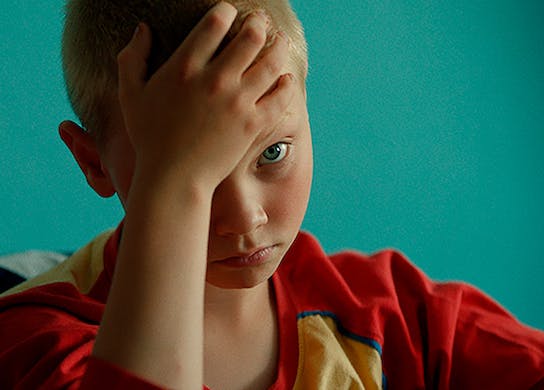First-Time Filmmakers Captivate by Casting ‘The Worst Ones’
While on paper the movie may sound too meta and self-indulgent, it is anything but unengaging, especially with its appealing actors and sly humor, which is usually at the expense of filmmakers.

A show business adage, “Never work with children or animals,” has been attributed to the comedian/actor W. C. Fields, though he might not have said it. Primarily the statement refers to the danger of being upstaged by those particular acting partners. Yet it can also describe the difficulty of managing unruly children and animals on set, and therefore is a warning to directors as well.
Playing at the Quad Cinema, the new French movie “The Worst Ones” contains both children and, to a lesser extent, animals, and in and of itself could be interpreted as further evidence of the saying’s truth. Focused on the making of a movie at a housing project in a northern French suburb, it’s the first feature film by directors Romane Gueret and Lise Akoka. Ms. Akoka, specifically, had been casting and coaching children in acting before directing, and this concentration plays a central role in the movie’s themes.
The film’s first few scenes involve auditions in which the director of the movie-within-the-movie asks several kids about their lives. One has recently been released from juvenile detention, while another questions why the filmmakers are looking to cast “the worst ones,” as she puts it. The director concedes that he’s looking for troubled kids because the movie he’s making is about disaffected youth, specifically a pregnant teenager and her younger brother who live with their doddering grandmother.
The kids being interviewed are all captivating, especially scrappy young Ryan, who is chosen to play the younger brother. Ryan is seen fidgeting and squirming during the audition, and also during a later scene with child protection officers who are evaluating his current living situation with his late-adolescent sister. It becomes apparent that the director chooses Ryan and the other adolescents to act in his movie because their lives more or less mirror the story he’s trying to tell. It must also be pointed out that the youngsters are non-professional actors playing non-professional actors, and that Ms. Akoka and Ms. Gueret selected them from the same locales — low-income neighborhoods and rehabilitation centers for minors — as the fictional director does.
If this setup sounds too meta and self-indulgent, then the culprit may be my lumbering, starchy prose. For the movie is anything but unengaging, especially with its appealing actors and sly humor, which is usually at the expense of the filmmakers. One humorous observation has the crew admiring a low-rent housing building’s crumbling wall, a pointed dig at how the creative class often romanticizes urban decay and poverty.
The filming of an intimate scene between the pregnant teen and her boyfriend provides a particularly funny moment: the male director vocalizing how he would like her to breathe and give out little exhortations as they kiss. Issues of how young women are perceived by men of all ages and classes are deftly addressed throughout.
The theme of exploitation comes up often as well, summed up in a wrap party scene near the movie’s end in which a few local adults chastise some crew members about encouraging the children’s antisocial behavior and reinforcing stereotypes of a “bad neighborhood” by focusing on the more sordid aspects of the milieu. Once again the movie’s self-reflective quality may turn off some viewers, yet overall it’s an intelligent exploration of the intersection of filmmaking and reality, the uneasy relations between different social classes, and the difference between intent and execution.
The animals materialize in the form of pigeons during a few late scenes. Through another glimpse at the moviemaking process, we see pigeon-trainers convene to help the director get a pivotal shot featuring Ryan and hundreds of the birds. The movie the slightly ridiculous director is making looks alternately melodramatic, realistic, compassionate, and pretentious, much like the one we’ve been watching. Tonally, “The Worst Ones” may be all over the place, but its heart is in the right place.
The scene with the pigeons and little Ryan goes off without a hitch, and while it’s almost a certainty that each scene Ms. Akoka and Ms. Gueret directed didn’t go as smoothly as this made-up one, I can vouch for the consistently intriguing quality of their clever yet earnest movie.

